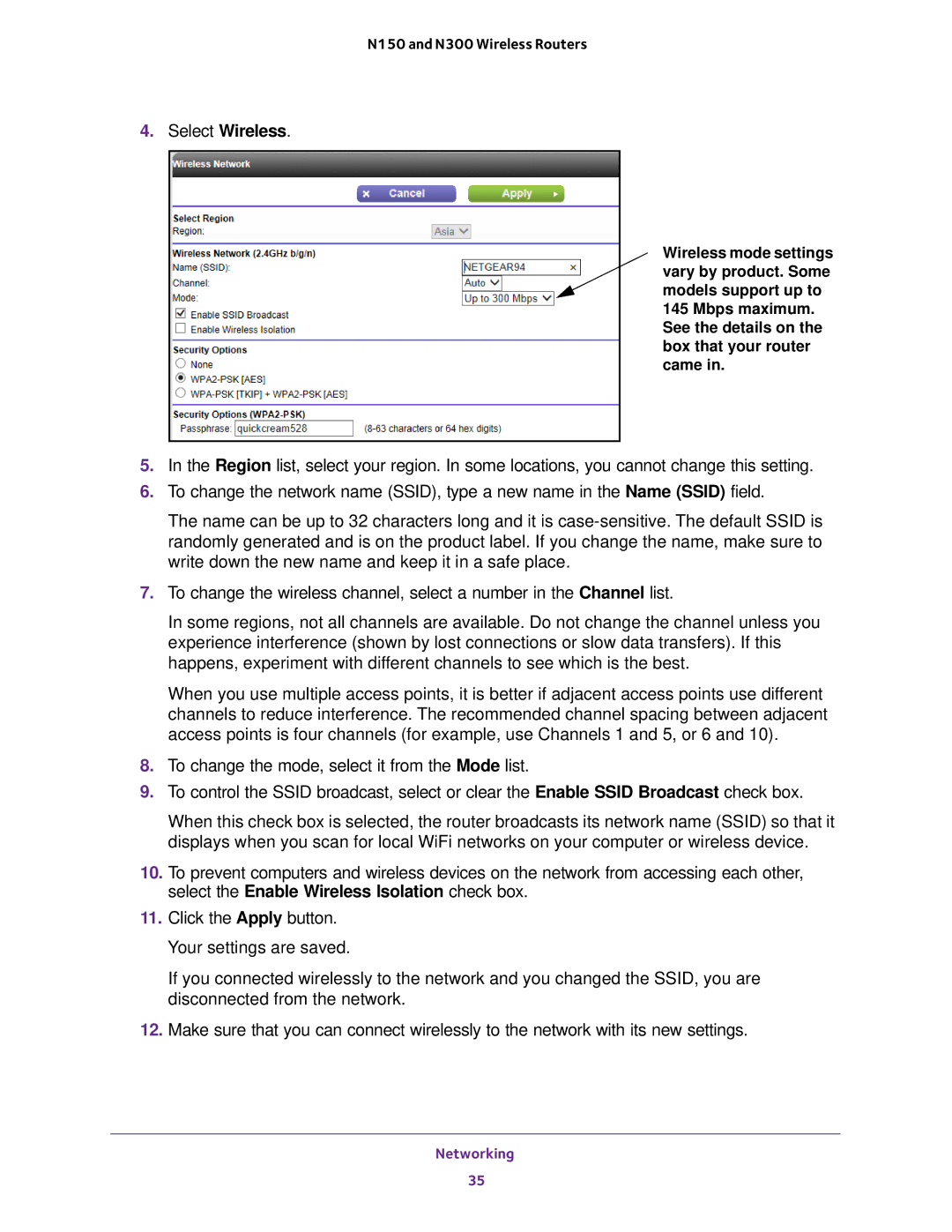
N150 and N300 Wireless Routers
4.Select Wireless.
Wireless mode settings vary by product. Some models support up to 145 Mbps maximum. See the details on the box that your router came in.
5.In the Region list, select your region. In some locations, you cannot change this setting.
6.To change the network name (SSID), type a new name in the Name (SSID) field.
The name can be up to 32 characters long and it is
7.To change the wireless channel, select a number in the Channel list.
In some regions, not all channels are available. Do not change the channel unless you experience interference (shown by lost connections or slow data transfers). If this happens, experiment with different channels to see which is the best.
When you use multiple access points, it is better if adjacent access points use different channels to reduce interference. The recommended channel spacing between adjacent access points is four channels (for example, use Channels 1 and 5, or 6 and 10).
8.To change the mode, select it from the Mode list.
9.To control the SSID broadcast, select or clear the Enable SSID Broadcast check box.
When this check box is selected, the router broadcasts its network name (SSID) so that it displays when you scan for local WiFi networks on your computer or wireless device.
10.To prevent computers and wireless devices on the network from accessing each other, select the Enable Wireless Isolation check box.
11.Click the Apply button. Your settings are saved.
If you connected wirelessly to the network and you changed the SSID, you are disconnected from the network.
12.Make sure that you can connect wirelessly to the network with its new settings.
Networking
35
